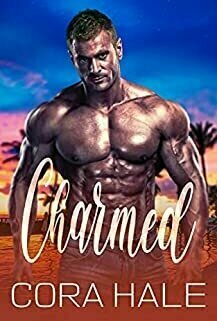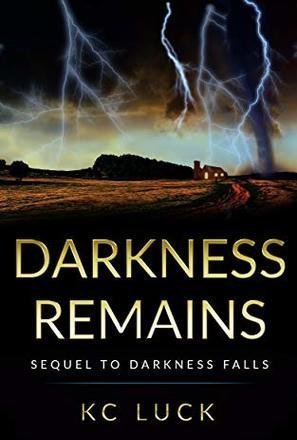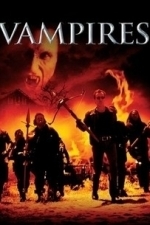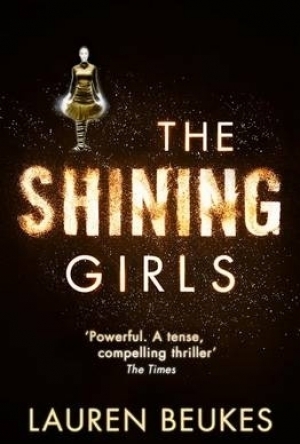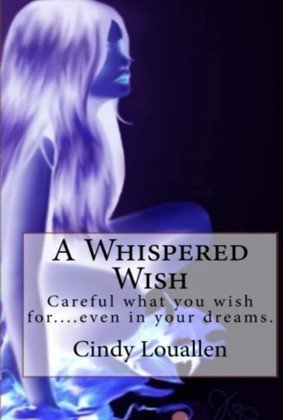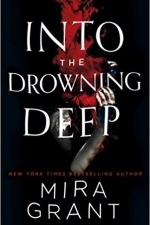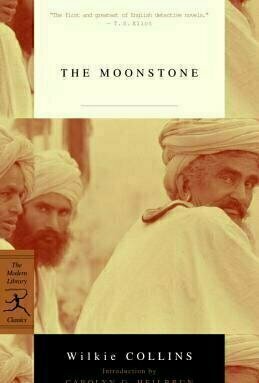Search
Chris Sawin (602 KP) rated John Carpenter's Vampires (1998) in Movies
Jun 22, 2019
A group of eccentric vampire hunters lead by the rugged and cold-hearted Jack Crow (James Woods) never really stop working. Taking great pride in the fruits of their labor, they work hard and play even harder as their celebrations after a job well done consist of alcohol flowing freely and plenty of women to take their minds off of work. But this particular job didn't go exactly as planned and it's weighing heavily on the mind of Jack Crow. Even after killing what's referred to as a "nest" of nine vampires, the master was no where to be found. Hardly a reason to celebrate in Jack's eyes. Unfortunately, his gut instinct was right as things get a hell of a lot worse for Jack's team when the master shows up to their little shindig. But this master is different from the others; stronger, more powerful, and why does he know Jack's name? There's something more elaborate going on and Jack Crow is going to find out exactly what it is while eradicating as many vampires as he possibly can along the way.
Judging by the ratings this film has (34% fresh on Rotten Tomatoes, 5.8/10 on IMDb), I guess it's safe to say that this could be a guilty pleasure of mine. I love most of John Carpenter's work and I really enjoyed his take on vampires. Jack Crow is certainly reason alone to sit through this and although the character originated in John Steakley's novel, I feel Crow is just as strong of a character in Carpenter's world as Snake Plissken from Escape From New York. Even though he's basically a mean spirited SOB, you can't help but sympathize with the character as the film moves on. Considering all that's happened to him in his lifetime, he seems to be a decent guy deep down underneath that extremely thick and rough exterior. His dialogue was also a lot of fun. Gems such as him asking Father Adam Guiteau if he had wood after the fight they just had or when he's explaining the true mythos behind vampires and to "forget whatever you've seen in the movies" was just classic.
Other than Jack Crow, I actually really enjoyed the storyline which seemed to be a breaking point for a lot of people. A vampire seeking a black cross to finish a reverse exorcism, so he can walk in daylight without turning to dust. Only Carpenter could pull something like that off. Their methods of killing vampires were also a bit more original and unorthodox compared to other vampire films of the past. Jack Crow would shoot an arrow from a crossbow, which would be attached to a wire on the bottom of a jeep that would be reeled in by Daniel Baldwin's Anthony Montoya that would drag the vampire into the sunlight where their body would burst into flames. Maybe it's considered cheesy to some, but it was refreshing to see something different for a change. As big of a horror fan that I am, I don't really think of myself as a fan of vampires. I'm not sure if it's because I'm picky or because it seems like everything is being recycled when it comes to storylines in horror films these days, but I like to think when a vampire film does make an impact on me that it says more than the average horror film containing vampires.
John Carpenter, the master of horror, delivers a refreshing and interesting take on vampires with the aptly named Vampires. It also dawns another strong lead character in a Carpenter film in the form of Jack Crow and contains some of the most witty and enjoyable dialogue of any horror film from the late '90s. The storyline is also magnificently peculiar, which is a definite plus in my book. This would definitely make my list of favorite vampire films, if I ever decided to make one. If you're a fan of John Carpenter and haven't seen this gem, I highly recommend doing so. Or if you have, maybe it's time to dust it off and give it another watch.
Judging by the ratings this film has (34% fresh on Rotten Tomatoes, 5.8/10 on IMDb), I guess it's safe to say that this could be a guilty pleasure of mine. I love most of John Carpenter's work and I really enjoyed his take on vampires. Jack Crow is certainly reason alone to sit through this and although the character originated in John Steakley's novel, I feel Crow is just as strong of a character in Carpenter's world as Snake Plissken from Escape From New York. Even though he's basically a mean spirited SOB, you can't help but sympathize with the character as the film moves on. Considering all that's happened to him in his lifetime, he seems to be a decent guy deep down underneath that extremely thick and rough exterior. His dialogue was also a lot of fun. Gems such as him asking Father Adam Guiteau if he had wood after the fight they just had or when he's explaining the true mythos behind vampires and to "forget whatever you've seen in the movies" was just classic.
Other than Jack Crow, I actually really enjoyed the storyline which seemed to be a breaking point for a lot of people. A vampire seeking a black cross to finish a reverse exorcism, so he can walk in daylight without turning to dust. Only Carpenter could pull something like that off. Their methods of killing vampires were also a bit more original and unorthodox compared to other vampire films of the past. Jack Crow would shoot an arrow from a crossbow, which would be attached to a wire on the bottom of a jeep that would be reeled in by Daniel Baldwin's Anthony Montoya that would drag the vampire into the sunlight where their body would burst into flames. Maybe it's considered cheesy to some, but it was refreshing to see something different for a change. As big of a horror fan that I am, I don't really think of myself as a fan of vampires. I'm not sure if it's because I'm picky or because it seems like everything is being recycled when it comes to storylines in horror films these days, but I like to think when a vampire film does make an impact on me that it says more than the average horror film containing vampires.
John Carpenter, the master of horror, delivers a refreshing and interesting take on vampires with the aptly named Vampires. It also dawns another strong lead character in a Carpenter film in the form of Jack Crow and contains some of the most witty and enjoyable dialogue of any horror film from the late '90s. The storyline is also magnificently peculiar, which is a definite plus in my book. This would definitely make my list of favorite vampire films, if I ever decided to make one. If you're a fan of John Carpenter and haven't seen this gem, I highly recommend doing so. Or if you have, maybe it's time to dust it off and give it another watch.
Jamie (131 KP) rated The Shining Girls in Books
Jun 4, 2017
Ambitious & unique story line (1 more)
Handles the web of time paradoxes well
Mash-up of genres is disjointing (2 more)
Romance is distracting at best
Repeated murder scenes gets wearisome
A cool time travel thriller
The Shining Girls follows Harper, a crude serial killer from the 1930’s that can hop through time; and Kirby, the spunky young woman that got away. This book was incredibly ambitious in its premise and I spent a great deal of my time reading the book wondering if it could deliver and I can happily say that I wasn’t disappointed.
The story is a heavily character driven dive through recent American history, from the Great Depression in the 1930’s all the way up to the early 1990’s. I was impressed by the amount of research that was put into this book, each decade having enough detail to get a good feel for the era. Many of the characters were pretty well fleshed out for such short chapters, and I found myself liking many of them.
My favorite part of the story, though, was the tragedy that was Harper because of how very flawed and human he is. He views himself as commanding, charming, persuasive, but to many of his victims he’s just downright creepy. He thinks himself calculating yet he makes mistakes left and right. He has a drive to rise up from the trenches of poverty and starvation from his own era, to be powerful. His choice of victims are all women in a great act of femicide, because he has this dire need to feel masculine. He chooses women that he views as invincible, that shine with ambition in order to assert his dominance by snuffing them out. He thinks he has this divine purpose, a destiny to fulfill because he wants it so desperately, even though the reality is that it’s simply senseless violence with no real meaning. He obsesses over the murders, returning to the scene of the crimes over and over to get off. Harper is pathetic. It was a refreshing change from the stereotypical smooth, genius archetype that glorifies killers. I didn’t know right away that this book was meant to be a feminist novel, but that’s what I took away from not only Harper’s struggle with masculinity, but with the strong and fiercely independent female characters all throughout the book.
There were a couple of problems with the book, however, that I feel need to be addressed. The mash up of genres is both a good and bad aspect of the story. The middle chapters where romance comes into play to me was really distracting and feels out of place. The tagline describing the novel also states that “the girl who wouldn’t die hunts the killer who shouldn’t exist” but honestly, it didn’t feel much like Kirby was really hunting the killer. Looking for connections with other murder cases and investigating some wild hunches, yes, but really she spends most of the book developing her bond with Dan. I would have really liked for this to be more of a cat and mouse type of hunt between Kirby and Harper.
The chapters with Harper were much more interesting, but even those became a little repetitive. We as the reader follow Harper as he stalks his victims in childhood, waiting for the right time to strike when they reach adulthood. While it was necessary for the plot to detail the characters to both connect them to the greater chain of paradoxes and to show Harper’s descent, the violence is excessive and extremely detailed, and after a while it started to feel more like torture porn. It just got tiring after a while.
Despite its flaws, I thought this book was good, and I mean really good. I loved the way that the time paradoxes were handled, time travel stories tend to be tricky and usually end up with a couple of glaring loop holes. The loops are handled in a way that I found satisfying and this book is easily my favorite time travel novel I’ve ever read. It is truly unique and a story I won’t soon forget.
The story is a heavily character driven dive through recent American history, from the Great Depression in the 1930’s all the way up to the early 1990’s. I was impressed by the amount of research that was put into this book, each decade having enough detail to get a good feel for the era. Many of the characters were pretty well fleshed out for such short chapters, and I found myself liking many of them.
My favorite part of the story, though, was the tragedy that was Harper because of how very flawed and human he is. He views himself as commanding, charming, persuasive, but to many of his victims he’s just downright creepy. He thinks himself calculating yet he makes mistakes left and right. He has a drive to rise up from the trenches of poverty and starvation from his own era, to be powerful. His choice of victims are all women in a great act of femicide, because he has this dire need to feel masculine. He chooses women that he views as invincible, that shine with ambition in order to assert his dominance by snuffing them out. He thinks he has this divine purpose, a destiny to fulfill because he wants it so desperately, even though the reality is that it’s simply senseless violence with no real meaning. He obsesses over the murders, returning to the scene of the crimes over and over to get off. Harper is pathetic. It was a refreshing change from the stereotypical smooth, genius archetype that glorifies killers. I didn’t know right away that this book was meant to be a feminist novel, but that’s what I took away from not only Harper’s struggle with masculinity, but with the strong and fiercely independent female characters all throughout the book.
There were a couple of problems with the book, however, that I feel need to be addressed. The mash up of genres is both a good and bad aspect of the story. The middle chapters where romance comes into play to me was really distracting and feels out of place. The tagline describing the novel also states that “the girl who wouldn’t die hunts the killer who shouldn’t exist” but honestly, it didn’t feel much like Kirby was really hunting the killer. Looking for connections with other murder cases and investigating some wild hunches, yes, but really she spends most of the book developing her bond with Dan. I would have really liked for this to be more of a cat and mouse type of hunt between Kirby and Harper.
The chapters with Harper were much more interesting, but even those became a little repetitive. We as the reader follow Harper as he stalks his victims in childhood, waiting for the right time to strike when they reach adulthood. While it was necessary for the plot to detail the characters to both connect them to the greater chain of paradoxes and to show Harper’s descent, the violence is excessive and extremely detailed, and after a while it started to feel more like torture porn. It just got tiring after a while.
Despite its flaws, I thought this book was good, and I mean really good. I loved the way that the time paradoxes were handled, time travel stories tend to be tricky and usually end up with a couple of glaring loop holes. The loops are handled in a way that I found satisfying and this book is easily my favorite time travel novel I’ve ever read. It is truly unique and a story I won’t soon forget.
Kara Skinner (332 KP) rated A Whispered Wish in Books
Jun 11, 2019
Zoe hates camping. She loves air conditioning and staying indoors and cozy, but when her friends and boyfriend drag her out into the middle of the woods, she comes along. But things get even more complicated when she wakes up far away from her tent– as a pixie.
Can she become human again with the help of Prince Crispin, a handsome pixie? Or as feelings grow between them, will she even want to go back to her human life?
I decided to give A Whispered Wish a shot thanks to a ridiculous one-star review on Smashwords, written by someone who hadn’t read past the first two lines. But the novel was so cringeworthy, I almost sympathized with that asshole reviewer.
Just reading the novel was a toilsome task, thanks to the obvious typos and grammatical errors infecting the text, not to mention the random tense changes that yanked me out of the story every other page.
But even if I’d been able to be absorbed into the story, there wouldn’t have been anything to be absorbed into. Nothing freaking happens for two thirds of the book!
The beginning involves flimsy world-building and back story and preaching about how humans are horrible and they “can learn a thing or two from the pixies.” That line appears not once, but twice in a book meant to be read by adults, not five-year-olds.
This would be more tolerable if it was the pixies saying this to Zoe, who, as a human, defended herself and humankind. But instead, it was Zoe who instantly accepted that she and all other humans, including her friends and boyfriend, was hellspawn.
She accepts that humans are monsters about two minutes after realizing she turned into a pixie when she asks the other pixies if she can tell her human friends what’s happening.
“is there a way that we can let them know? Please? I can’t let them keep looking for me. They will be so worried,” tears still flowing. Only now, she can’t stop them.
Fionna pops up beside them, “I’m sorry Zoë, but we just can’t. To let them know that we exist is very dangerous for us.”
“You have to understand,” Brigid said, “they will exterminate us just to find out what makes us what we are.” Zoë knows they are right about this, anything new or something they didn’t understand as humans they dissected or destroyed.
A Whispered Wish, page 30
Are her friends effing Nazis? I can’t think of another reason for why she would have so little faith in them. I’m not saying they should tell the press, but maybe Zoe’s best friends and her motherfreaking boyfriend won’t kill her just because she sprouted wings and shrank to two inches.
Conflict doesn’t flare up until two thirds into the book, and even then, the conflict is more like brief sparks instead of a raging fire. There are a few action scenes, but the action was over so fast, I had to reread them to actually process them happening.
The main conflict between two pixie kingdoms feels more like an afterthought than an actual plotline.
All of a sudden, the pixies stop being this shining beacon of superiority and start being savage and warlike. Prince Crispin and his friends, who have never seen battle before, become expert fighters the second war is declared. It’s contrived and borderline absurd, but that’s fine because the final battle is over in like two pages.
Perhaps A Whispered Wish could have snatched a third star from me with the skin of its teeth if the characters had good chemistry, funny dialogue, or even an ounce of personality, but no.
All the men are strong, athletic, and ready to save the females while making sexist jokes about how women take forever shopping. The women are all kind, girly, and able to manipulate the men with their puppy eyes.
The two most interesting characters are the Queen of Devonshire, and Jaxxon, a defect from Pembrokeshire, and they only have a couple of scenes. Everyone else absurdly boring.
So, A Whispered Wish is a solid two-star read. With some heavy editing and revising, it could have been good, but as is, it’s less interesting than the average hospital waiting room. A Whispered Wish is free on Smashwords.
Can she become human again with the help of Prince Crispin, a handsome pixie? Or as feelings grow between them, will she even want to go back to her human life?
I decided to give A Whispered Wish a shot thanks to a ridiculous one-star review on Smashwords, written by someone who hadn’t read past the first two lines. But the novel was so cringeworthy, I almost sympathized with that asshole reviewer.
Just reading the novel was a toilsome task, thanks to the obvious typos and grammatical errors infecting the text, not to mention the random tense changes that yanked me out of the story every other page.
But even if I’d been able to be absorbed into the story, there wouldn’t have been anything to be absorbed into. Nothing freaking happens for two thirds of the book!
The beginning involves flimsy world-building and back story and preaching about how humans are horrible and they “can learn a thing or two from the pixies.” That line appears not once, but twice in a book meant to be read by adults, not five-year-olds.
This would be more tolerable if it was the pixies saying this to Zoe, who, as a human, defended herself and humankind. But instead, it was Zoe who instantly accepted that she and all other humans, including her friends and boyfriend, was hellspawn.
She accepts that humans are monsters about two minutes after realizing she turned into a pixie when she asks the other pixies if she can tell her human friends what’s happening.
“is there a way that we can let them know? Please? I can’t let them keep looking for me. They will be so worried,” tears still flowing. Only now, she can’t stop them.
Fionna pops up beside them, “I’m sorry Zoë, but we just can’t. To let them know that we exist is very dangerous for us.”
“You have to understand,” Brigid said, “they will exterminate us just to find out what makes us what we are.” Zoë knows they are right about this, anything new or something they didn’t understand as humans they dissected or destroyed.
A Whispered Wish, page 30
Are her friends effing Nazis? I can’t think of another reason for why she would have so little faith in them. I’m not saying they should tell the press, but maybe Zoe’s best friends and her motherfreaking boyfriend won’t kill her just because she sprouted wings and shrank to two inches.
Conflict doesn’t flare up until two thirds into the book, and even then, the conflict is more like brief sparks instead of a raging fire. There are a few action scenes, but the action was over so fast, I had to reread them to actually process them happening.
The main conflict between two pixie kingdoms feels more like an afterthought than an actual plotline.
All of a sudden, the pixies stop being this shining beacon of superiority and start being savage and warlike. Prince Crispin and his friends, who have never seen battle before, become expert fighters the second war is declared. It’s contrived and borderline absurd, but that’s fine because the final battle is over in like two pages.
Perhaps A Whispered Wish could have snatched a third star from me with the skin of its teeth if the characters had good chemistry, funny dialogue, or even an ounce of personality, but no.
All the men are strong, athletic, and ready to save the females while making sexist jokes about how women take forever shopping. The women are all kind, girly, and able to manipulate the men with their puppy eyes.
The two most interesting characters are the Queen of Devonshire, and Jaxxon, a defect from Pembrokeshire, and they only have a couple of scenes. Everyone else absurdly boring.
So, A Whispered Wish is a solid two-star read. With some heavy editing and revising, it could have been good, but as is, it’s less interesting than the average hospital waiting room. A Whispered Wish is free on Smashwords.
Cynthia Armistead (17 KP) rated Mindhealer (The Watchers, #5) in Books
Mar 1, 2018
<p>I'm actually reviewing all five of the Watcher books. They're quite short—novella length, really—and very much interrelated (especially the first four). I read all of them in about a day and a half, despite doing other things. I do advise taking them all in row, which is the equivalent of reading one "normal" novel.</p>
<p>
<a target="_blank" href="http://www.goodreads.com/book/show/268186.Dark_Watcher">Dark Watcher</a> opens in Santiago City (aka Saint City), with a quartet of witches. Mindhealer is the only book that takes place outside of Santiago City, which seems to be the primary setting for all of Saintcrow's novels (from what I've read in the descriptions). </p>
<p>
Theodora, earth witch and healer, runs the Cauldron, an occult book and supply store. Mariamne Niege (water witch, prognosticator) and Elise Nicholson (fire witch) work for her in addition to being, respectively, a graduate student and a musician. Suzanne (air witch, I don't believe we ever learn her last name) is Elise's foster mother and their teacher, something of a high priestess to the little group.</p>
<p>The four women know that they're psychic and that "magick" is real. They don't know that they are "Lightbringers," that there are groups and creatures in the world that hunt them, or that a group called Circle Lightfall trains and sends out "Watchers" to protect (and recruit) Lightbringers in order to counterbalance the darkness in the world.
</p>
<p>Watchers are formerly wicked men with some psychic talents who have been given a chance to redeem themselves. They are bonded with a tanak, a dark symbiote that gives them supernatural speed, strength, healing power, and longevity. The tanak also makes it possible for them to sense darkness, but it causes the Watchers to experience pain whenever they're around Lightbringers.
</p>
<p>The catch is that for every Watcher, there is one Witch whose presence and touch will be intensely pleasurable instead of torturous. The hope of finding that one witch is what keeps each Watcher going, fighting and surviving horrific wounds for one chance at happiness.
</p>
<p>The use of the tired soulmate meme (though that specific word is never used) is annoying, and it detracts from what is otherwise a fairly original concept. The fact that there are only male Watchers, though there are a few (mostly queer) male lightbringers, is a bigger disappointment. The reasoning given is that women do not have the viciousness to kill without hesitation. That's simplistic, at best. Male lightbringers are also painted as weaker than females, and that, in combination with the pedestal upon which Watchers place Lightbringers, unbalances the novels.
</p>
<p>Theodora is the main subject of the first book. Mariamne is the focus of <a target="_blank" href="http://www.goodreads.com/book/show/268188.Storm_Watcher">Storm Watcher</a>. <a target="_blank" href="http://www.goodreads.com/book/show/268189.Fire_Watcher">Fire Watcher</a>, of course, is primarily about Elise. We meet a new air witch, Anya Harris, in <a target="_blank" href="http://www.goodreads.com/book/show/268190.Cloud_Watcher">Cloud Watcher</a>. And finally, Mindhealer is about Caro Robbins, whose brother plays a small part in Fire Watcher.
</p>
<p>The books should certainly be classified as romances first, although they do have very strong paranormal themes. Every book follows the classic romance novel formula. The fact that I kept reading despite my dislike of romances is a testament to Saintcrow's talent.
</p>
<p>I suspect that the author either is pagan, or is very familiar with pagan practices. The rituals in each novel are nicely done, and I wouldn't be surprised to hear people using some of the invocations used in Circle.</p>
<p>I do have to propose the Watcher drinking game. Take a shot every time there's any mention of treating a Watcher "dreadfully," and every time a Watcher moans about how unworthy he is to be in the presence of a Lightbringer. You'll be past noticing any formulae in no time!</p>
<p>
<a target="_blank" href="http://www.goodreads.com/book/show/268186.Dark_Watcher">Dark Watcher</a> opens in Santiago City (aka Saint City), with a quartet of witches. Mindhealer is the only book that takes place outside of Santiago City, which seems to be the primary setting for all of Saintcrow's novels (from what I've read in the descriptions). </p>
<p>
Theodora, earth witch and healer, runs the Cauldron, an occult book and supply store. Mariamne Niege (water witch, prognosticator) and Elise Nicholson (fire witch) work for her in addition to being, respectively, a graduate student and a musician. Suzanne (air witch, I don't believe we ever learn her last name) is Elise's foster mother and their teacher, something of a high priestess to the little group.</p>
<p>The four women know that they're psychic and that "magick" is real. They don't know that they are "Lightbringers," that there are groups and creatures in the world that hunt them, or that a group called Circle Lightfall trains and sends out "Watchers" to protect (and recruit) Lightbringers in order to counterbalance the darkness in the world.
</p>
<p>Watchers are formerly wicked men with some psychic talents who have been given a chance to redeem themselves. They are bonded with a tanak, a dark symbiote that gives them supernatural speed, strength, healing power, and longevity. The tanak also makes it possible for them to sense darkness, but it causes the Watchers to experience pain whenever they're around Lightbringers.
</p>
<p>The catch is that for every Watcher, there is one Witch whose presence and touch will be intensely pleasurable instead of torturous. The hope of finding that one witch is what keeps each Watcher going, fighting and surviving horrific wounds for one chance at happiness.
</p>
<p>The use of the tired soulmate meme (though that specific word is never used) is annoying, and it detracts from what is otherwise a fairly original concept. The fact that there are only male Watchers, though there are a few (mostly queer) male lightbringers, is a bigger disappointment. The reasoning given is that women do not have the viciousness to kill without hesitation. That's simplistic, at best. Male lightbringers are also painted as weaker than females, and that, in combination with the pedestal upon which Watchers place Lightbringers, unbalances the novels.
</p>
<p>Theodora is the main subject of the first book. Mariamne is the focus of <a target="_blank" href="http://www.goodreads.com/book/show/268188.Storm_Watcher">Storm Watcher</a>. <a target="_blank" href="http://www.goodreads.com/book/show/268189.Fire_Watcher">Fire Watcher</a>, of course, is primarily about Elise. We meet a new air witch, Anya Harris, in <a target="_blank" href="http://www.goodreads.com/book/show/268190.Cloud_Watcher">Cloud Watcher</a>. And finally, Mindhealer is about Caro Robbins, whose brother plays a small part in Fire Watcher.
</p>
<p>The books should certainly be classified as romances first, although they do have very strong paranormal themes. Every book follows the classic romance novel formula. The fact that I kept reading despite my dislike of romances is a testament to Saintcrow's talent.
</p>
<p>I suspect that the author either is pagan, or is very familiar with pagan practices. The rituals in each novel are nicely done, and I wouldn't be surprised to hear people using some of the invocations used in Circle.</p>
<p>I do have to propose the Watcher drinking game. Take a shot every time there's any mention of treating a Watcher "dreadfully," and every time a Watcher moans about how unworthy he is to be in the presence of a Lightbringer. You'll be past noticing any formulae in no time!</p>

Cooking Games Paradise Chef - Burger Food Maker
Food & Drink and Games
App
Cooking Games Paradise Food Maker & Burger Chef - Cook and serve tasty food recipes & learn how to...
Goddess in the Stacks (553 KP) rated Into the Drowning Deep: Rolling in the Deep Book 1 in Books
Mar 29, 2018
WOW. I don't typically read horror, but this was fantasy horror, and WOW. I picked up the novella precursor to this sometime last year - I never reviewed it here, probably because it was barely over 100 pages, but it was fascinating and haunting all the same. Rolling in the Deep told the story of the Atargatis, a ship sent out to the Mariana Trench to stage a mockumentary - supposedly looking for mermaids, but equipped with actors who could swim with mermaid tails. They never planned to find anything. Except they did. And they all died. One by one at first, a few people picked off, then the entire ship swarmed and eaten. The reader sees this happen, but to anyone not on the ship, the only thing they find is some footage on an abandoned ship.
Into the Drowning Deep fast forwards a few years; the production company, Imagine Network, is not doing so well, and they want to prove that the footage wasn't a hoax. So they assemble a new mission, this one with a lot more security. (Though they still picked security with an eye for what would look good on TV, rather than what would be effective, which was a poor choice.) The reader, of course, knows that the mermaids are real, and that they are dangerous, so you spend much of the first part of the book in a state of suspense waiting for them to show up. (I actually thought it took a little too long for them to finally show up, but the time was used for character-building.)
The book is very Lovecraftian, actually - from the strong, building sense of foreboding doom to the creatures that should not exist, to the kind of gibbering insanity near the end. It's probably why I liked the book so much; Lovecraft is about the only kind of horror writing I like, and I get the same feeling from Grant's writing.
So yes, the book is about mermaids. But these aren't mermaids as you've seen them before. They're not cute, they're not seductive, they don't want to live on land, and they're definitely not friendly. These mermaids are predators. Intelligent predators, but predators. And humans, apparently, are delicious.
Most of the characters in the book are scientists trying to prove mermaids exist, so there's a lot of science happening aboard the ship, and Grant doesn't shy away from it happening on the page as well. She also includes a pair of deaf scientist twins, and their interpreter sibling, which is important because the mermaids use a form of sign language as well. Most of the main characters are women, which is also great to see in such a large concentration of fictional scientists.
If you like fantasy horror, i.e. Lovecraft, you should definitely pick this up. Rolling in the Deep is also worth reading first - I think it definitely adds another layer to the sense of foreboding doom.
You can find all my reviews at http://goddessinthestacks.wordpress.com
Into the Drowning Deep fast forwards a few years; the production company, Imagine Network, is not doing so well, and they want to prove that the footage wasn't a hoax. So they assemble a new mission, this one with a lot more security. (Though they still picked security with an eye for what would look good on TV, rather than what would be effective, which was a poor choice.) The reader, of course, knows that the mermaids are real, and that they are dangerous, so you spend much of the first part of the book in a state of suspense waiting for them to show up. (I actually thought it took a little too long for them to finally show up, but the time was used for character-building.)
The book is very Lovecraftian, actually - from the strong, building sense of foreboding doom to the creatures that should not exist, to the kind of gibbering insanity near the end. It's probably why I liked the book so much; Lovecraft is about the only kind of horror writing I like, and I get the same feeling from Grant's writing.
So yes, the book is about mermaids. But these aren't mermaids as you've seen them before. They're not cute, they're not seductive, they don't want to live on land, and they're definitely not friendly. These mermaids are predators. Intelligent predators, but predators. And humans, apparently, are delicious.
Most of the characters in the book are scientists trying to prove mermaids exist, so there's a lot of science happening aboard the ship, and Grant doesn't shy away from it happening on the page as well. She also includes a pair of deaf scientist twins, and their interpreter sibling, which is important because the mermaids use a form of sign language as well. Most of the main characters are women, which is also great to see in such a large concentration of fictional scientists.
If you like fantasy horror, i.e. Lovecraft, you should definitely pick this up. Rolling in the Deep is also worth reading first - I think it definitely adds another layer to the sense of foreboding doom.
You can find all my reviews at http://goddessinthestacks.wordpress.com
Phil Leader (619 KP) rated The Moonstone in Books
Nov 20, 2019
Of all the books I had to read at school, The Moonstone was probably the only novel I really enjoyed. It is one of the first 'whodunnit' type of books and, remarkably, it manages to hit virtually every requirement of the genre dead centre. If this book was written today, it would still be a classic.
The Moonstone of the title is a rare yellow diamond, stolen from an Indian shrine by colonialists. Thought to be unlucky it is left to the young Rachel Verinder. The night after her 18th birthday party the stone is stolen from her rooms, and the rest of the novel describes how the various players eventually manage to solve the crime.
The plot features twists and turns galore, false trails and red herrings enough for two detective stories. Although the crime involved is 'only' theft rather than the more usual murder it is no less engaging as a story. The characters are well drawn and - social reformer that Collins was - there are strong women and intelligent and interesting servants as well as the landed gentry and philanthropists that inhabit the world of country estates in the mid 19th century that the novel is set in.
One feature of the book is that the story is told from the viewpoint of a number of the players. Firstly (and for nearly half the book) we are introduced to the Verinders and the theft by Gabriel Betteredge, a long serving family retainer who is head of the staff and a sort of de facto butler. Betteredge's narrative is charming and witty, full of dry asides and observations. His habit of picking passages from Robinson Crusoe and applying them to daily life is a quirk that is completely in keeping with his character.
Once the story moves to London, the narrative is taken up by various other characters, sometimes just for a short journal entry, sometimes for extended periods of time. Collins imbues each of these parts with a different voice really skillfully, keeping each character very separate.
The solution to the mystery of who stole the diamond and why is convoluted but also very simple. The whole story is well crafted and fits together really well.
The only negative points really are those imposed on Collins by the time he was writing this. There is an overlong introduction about the diamond in India (it seems that in Victorian novels the long winded introduction is somehow expected by the reader) and the pace slows somewhat in London as there is a lot of description about the character's social standings and financial affairs that just aren't as relevant today.
Nevertheless this really is as good a book as I remember. I certainly rate Collins a lot higher than Charles Dickens as a writer. Definitely recommended for anyone who likes a detective mystery which will keep the reader guessing until the very end.
The Moonstone of the title is a rare yellow diamond, stolen from an Indian shrine by colonialists. Thought to be unlucky it is left to the young Rachel Verinder. The night after her 18th birthday party the stone is stolen from her rooms, and the rest of the novel describes how the various players eventually manage to solve the crime.
The plot features twists and turns galore, false trails and red herrings enough for two detective stories. Although the crime involved is 'only' theft rather than the more usual murder it is no less engaging as a story. The characters are well drawn and - social reformer that Collins was - there are strong women and intelligent and interesting servants as well as the landed gentry and philanthropists that inhabit the world of country estates in the mid 19th century that the novel is set in.
One feature of the book is that the story is told from the viewpoint of a number of the players. Firstly (and for nearly half the book) we are introduced to the Verinders and the theft by Gabriel Betteredge, a long serving family retainer who is head of the staff and a sort of de facto butler. Betteredge's narrative is charming and witty, full of dry asides and observations. His habit of picking passages from Robinson Crusoe and applying them to daily life is a quirk that is completely in keeping with his character.
Once the story moves to London, the narrative is taken up by various other characters, sometimes just for a short journal entry, sometimes for extended periods of time. Collins imbues each of these parts with a different voice really skillfully, keeping each character very separate.
The solution to the mystery of who stole the diamond and why is convoluted but also very simple. The whole story is well crafted and fits together really well.
The only negative points really are those imposed on Collins by the time he was writing this. There is an overlong introduction about the diamond in India (it seems that in Victorian novels the long winded introduction is somehow expected by the reader) and the pace slows somewhat in London as there is a lot of description about the character's social standings and financial affairs that just aren't as relevant today.
Nevertheless this really is as good a book as I remember. I certainly rate Collins a lot higher than Charles Dickens as a writer. Definitely recommended for anyone who likes a detective mystery which will keep the reader guessing until the very end.

10,000,000 HD Wallpapers
Utilities and Entertainment
App
Over 10,000,000 wallpapers for literally any topic! Designed specifically for the iPhone's Retina...
